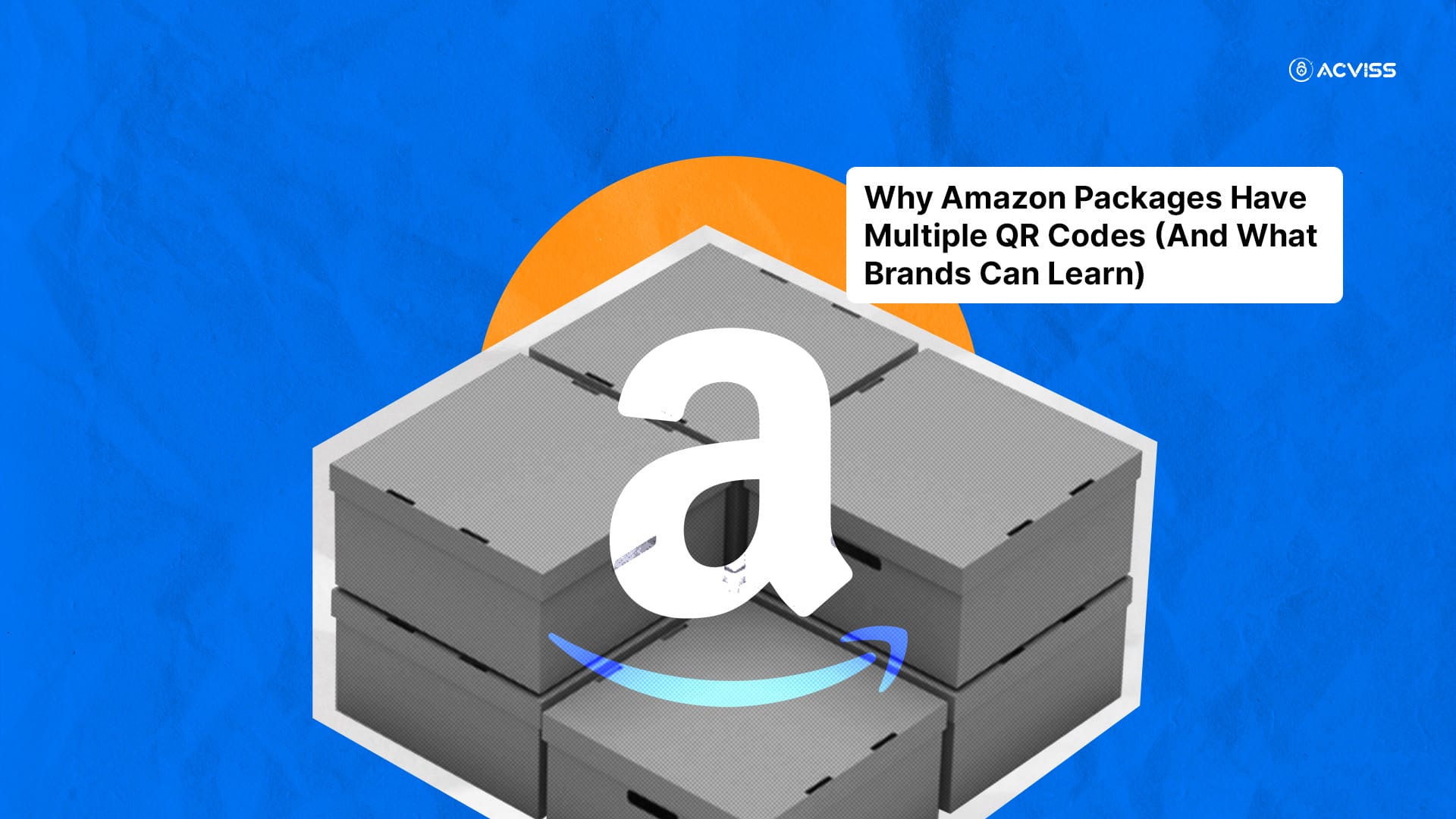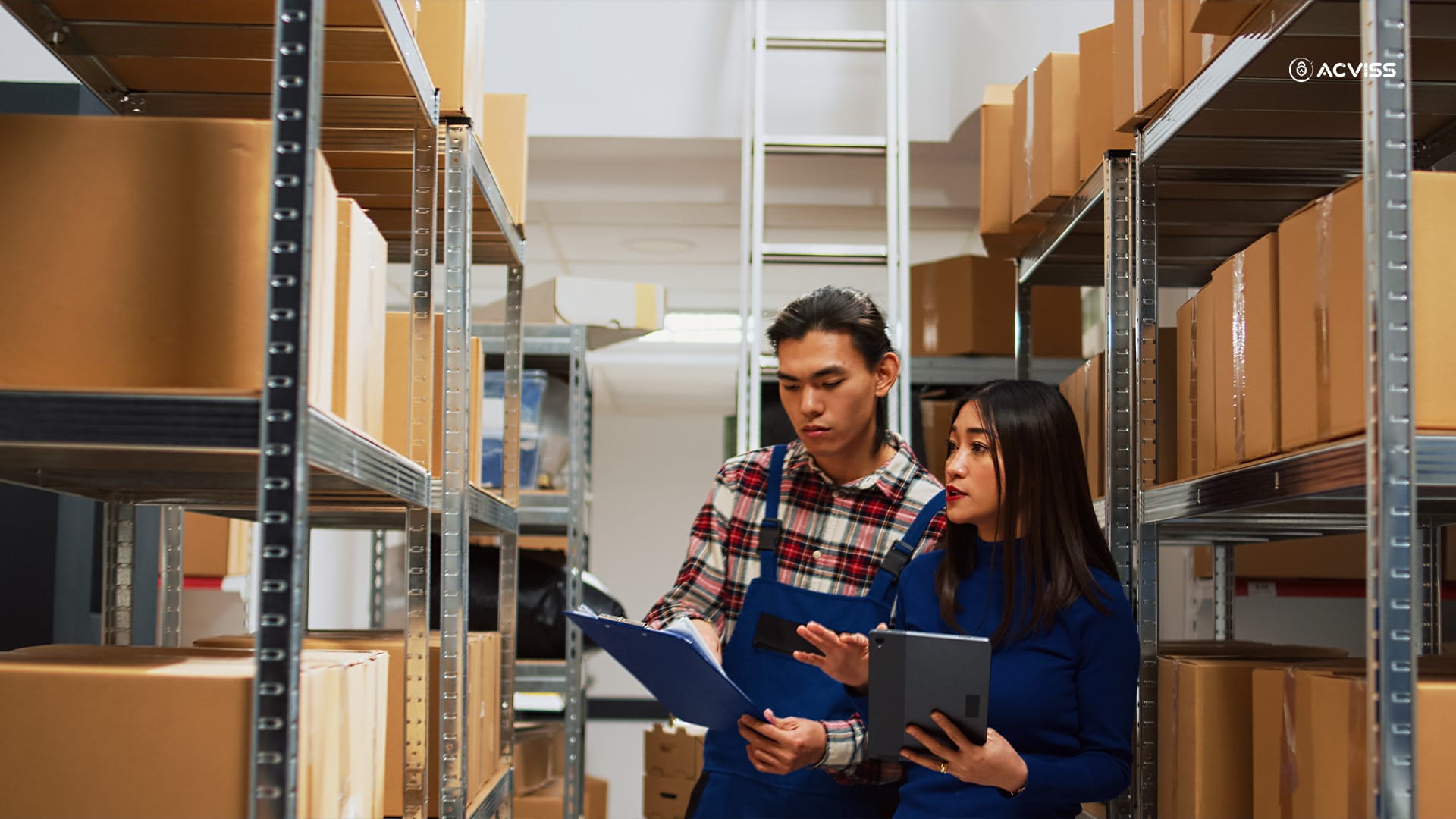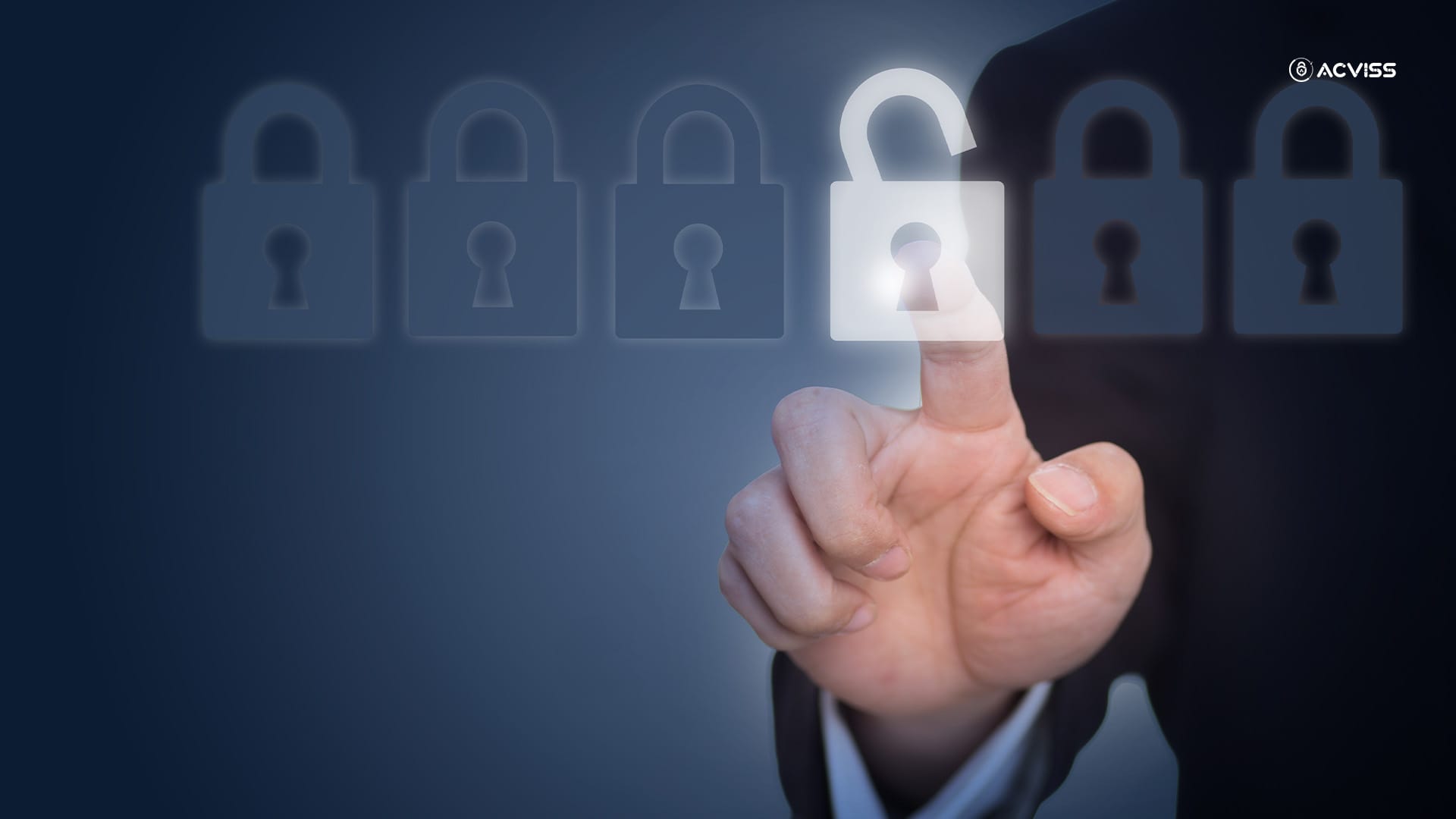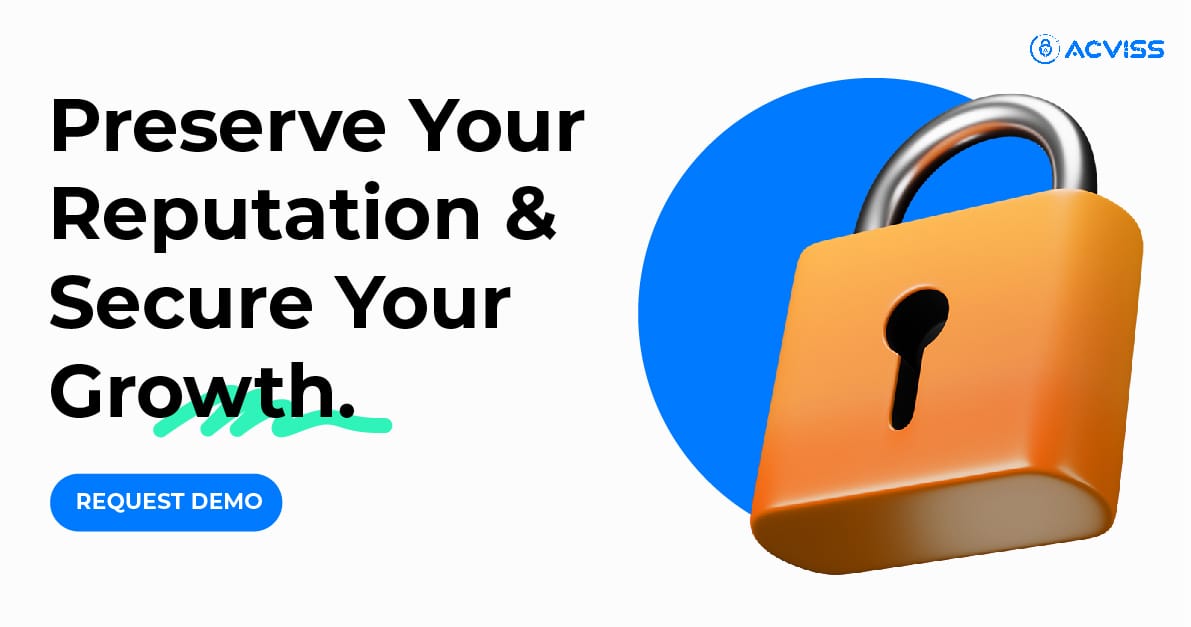Why Amazon Packages Have Multiple QR Codes (And What Brands Can Learn)

Ever wondered why your Amazon package has 3, 4, or even 5 different QR codes scattered across the box and products?
Most customers notice multiple codes but don't understand their purpose. It’s clearly not a mistake. Each code serves a specific function in Amazon's anti-counterfeiting and logistics system. 68% of consumers unknowingly buy fake products online (not just Amazon, across the web). But of course, Amazon is one of the platforms where counterfeiters sell their products. To address the issue, Amazon used this multi-code strategy, and in 2024 alone, Amazon seized 15M+ counterfeit products.
Amazon's approach offers valuable lessons, especially for all the e-commerce brands out there. Multiple verification points create stronger protection than single codes. Understanding this system helps brands build better authentication strategies that protect both revenue and customer trust.
In this blog, we will break down this multi-code strategy of Amazon.
The 5 Types of QR Codes Amazon Uses (And Why Each Matters)
1. Amazon Transparency Program Codes
These are unique per-product authentication codes that verify genuine items. Customers scan these using the Amazon transparency app to confirm authenticity before using the products. Amazon also scans these codes at fulfilment centres before shipping to ensure only genuine products reach customers.
2. Return Process QR Codes
Label-free return codes eliminate the need for printing return labels or repackaging items. Each item gets its own return code, which explains why multi-item packages often have multiple codes. Customers simply bring items and codes to drop-off locations.
3. Internal Logistics Tracking Codes
Warehouse and shipping codes track packages through Amazon's fulfilment network. These codes get scanned at multiple checkpoints for real-time inventory management and supply chain visibility. They help Amazon maintain operational efficiency across millions of packages daily.
4. Gift Receipt and Engagement Codes
Customer-facing codes link to thank-you pages, product information, or warranty registration. These build post-purchase engagement and help maintain customer relationships beyond the initial sale.
5. Seller and Brand Marketing Codes
Third-party seller codes direct customers to product support, reviews, or promotional offers. These help brands maintain customer relationships even when selling through Amazon's platform.
How Amazon's Multi-Code Strategy Fights Counterfeiting

Before multiple verification points, counterfeiters could exploit single points of failure. If they replicated one code, they could bypass the entire authentication system.
Amazon solved this with layered verification:
Layer 1: Transparency codes verify product authenticity at the source
Layer 2: Internal tracking codes confirm legitimate supply chain movement
Layer 3: Return codes validate purchase history and customer legitimacy
Layer 4: Engagement codes build ongoing relationships with genuine product owners
This multi-layer approach delivered impressive results. Amazon blocked 15M+ counterfeits in 2024, double the previous year's numbers. Their Counterfeit Crimes Unit recovered $180M over 5 years and filed 200 lawsuits against counterfeiters in 2024 alone.
Multiple codes work better because each serves as an independent verification point. Counterfeiters must replicate multiple complex systems simultaneously, making fraud exponentially more difficult and expensive. When one code fails or gets damaged, other codes can still identify and process the package, ensuring smooth operations.
The redundancy also provides operational benefits. One basic example is, let's say, if packaging damage affects one code, other verification methods are still functional, which will prevent legitimate products from getting flagged as suspicious.
What Brands Can Learn from Amazon's Approach
Lesson 1: Single Points of Failure Create Vulnerabilities
Most brands use one QR code for everything. Amazon proves that multiple specialised codes create stronger protection against increasingly sophisticated counterfeiters.
Lesson 2: Authentication Must Happen at Multiple Touchpoints
Amazon verifies products at fulfilment centres, and enables customer verification. This dual-layer approach catches counterfeits that slip through initial screening and builds customer confidence.
Lesson 3: Integration Across Functions
Amazon's codes serve authentication, logistics, returns, and customer engagement simultaneously. Brands should consider how their codes can serve multiple business functions rather than treating each as a separate system.
Lesson 4: Customer Education Drives Adoption
The Amazon transparency app teaches customers to verify products. Brands need similar education strategies to encourage authentication scanning and build verification habits.
Lesson 5: Supply Chain Visibility Prevents Problems
Amazon tracks products through every touchpoint. Brands without this visibility cannot identify where counterfeits enter their distribution network or optimise their supply chain performance.
Common brand mistakes:
- Using generic QR codes that anyone can replicate.
- Focusing only on customer-facing verification while ignoring supply chain tracking.
- Treating authentication as separate from other business functions.
A brand must invest in product protection. The investment in comprehensive protection pays for itself through reduced counterfeit losses and increased customer trust.
Brands using single verification points face 2.5x higher counterfeit penetration rates compared to multi-layer systems
How Origin by Acviss Enables Amazon-Level Protection for Any Brand
Here’s a thing: Amazon's multi-code system works because of its massive infrastructure investment. But most brands cannot replicate this approach alone without significant resource commitments.
Origin by Acviss solves this challenge by combining multiple verification functions into an integrated platform that any brand can deploy quickly and cost-effectively.
Here’s what you can do with Origin by Acviss:
Multi-Layer Authentication
- Product-level codes verify individual item authenticity, similar to Amazon Transparency codes but working across all sales channels, not just Amazon's platform.
- Batch-level tracking monitors supply chain movement like Amazon's logistics codes, providing real-time visibility from manufacturing through retail delivery.
- Geolocation verification confirms legitimate distribution channels by tracking where products get scanned and ensuring they remain within authorised regions.
- Tamper detection sends instant alerts for packaging manipulation, preventing damaged or altered products from accessing authentication systems.

Supply Chain Tracking Benefits
Origin by Acviss provides real-time visibility from manufacturing through retail, capturing data at every touchpoint. This matches Amazon's internal tracking capabilities but works across any distribution network, including traditional retail, e-commerce, and direct sales channels.
Customer Engagement Integration
Authentication codes also trigger loyalty programs, warranty registration, and customer support connections. This turns necessary verification steps into relationship-building opportunities that increase customer lifetime value.
Manual Supply Chain Verification
Unlike Amazon's heavily automated system, Origin by Acviss supports manual verification at distributors, retailers, and customer touchpoints. This flexibility works for brands without massive automation budgets while still providing comprehensive protection.
Origin by Acviss connects seamlessly with existing e-commerce platforms, inventory management systems, and customer databases. Brands get Amazon-level protection without rebuilding their entire infrastructure or disrupting current operations.
Case study:
An electronics manufacturer recently deployed Origin by Acviss across 3 distribution channels. Results?
- 99% reduction in counterfeit complaints
- 25% increase in customer trust scores
- Complete supply chain visibility achieved in just 14 days.
Origin by Acviss provides comprehensive protection at a fraction of Amazon's infrastructure investment, making enterprise-level anti-counterfeiting accessible to brands of all sizes.
Industries That Need Multi-Code Protection Most

Electronics and Tech Products
High-value items with complex supply chains face 40% counterfeit rates in some categories. Multi-code verification prevents fake components from reaching customers and protects warranties and support programs from abuse by counterfeit products.
Pharmaceuticals and Health Products
Life-critical products need multiple verification layers for patient safety. Manual supply chain verification helps pharmacies and distributors confirm authenticity at every step, ensuring only genuine medications reach patients.
Fashion and Luxury Goods
Brand reputation depends entirely on authentic product experiences. Multi-layer authentication prevents counterfeits from accessing warranty programs, repair services, and loyalty benefits that should only be available to genuine product owners.
FMCG and Consumer Goods
High-volume products need cost-effective yet comprehensive protection. Automated verification at distribution centres combined with customer-facing authentication provides complete coverage without slowing down fast-moving supply chains.
Success metrics across industries show consistent results:
- Electronics brands see a 67% reduction in counterfeit returns.
- Pharmaceutical companies achieve 89% improvement in supply chain traceability.
- Fashion brands report a 54% increase in customer trust scores.
- FMCG brands experience a 78% decrease in unauthorised distribution.
Single verification solutions fail because each industry has unique distribution challenges. Multi-code systems adapt to different supply chain structures while maintaining consistent protection levels across all channels.
Implementing Multi-Code Protection: Lessons from Amazon's Playbook
Start with High-Risk Products
Amazon began their Transparency program with luxury and high-counterfeit categories. Brands should prioritise products with the highest counterfeit risk or customer impact to maximise initial return on investment.
Integrate with Existing Systems
Amazon built authentication codes directly into their fulfilment process. Brands should integrate verification with current inventory management and customer service systems to avoid operational disruption.
Educate Customers Gradually
Amazon promotes transparency app usage without overwhelming customers. Brands need simple, clear messaging about why verification matters and how to do it, focusing on benefits rather than technical details.
Track Performance Metrics
Amazon measures counterfeit reduction, customer satisfaction, and operational efficiency. Brands should establish similar KPIs before implementation to track success and optimise performance.
Typical implementation follows this timeline:
- Week 1-2 involves system integration and testing.
- Week 3-4 covers pilot launch with select products.
- Month 2 includes full rollout with customer education campaigns.
- Month 3 and beyond focus on performance optimisation and expansion to additional product lines.
Common implementation mistakes:
- Rolling out too many code types simultaneously
- Providing insufficient customer education
- Ignoring supply chain partner training needs
- Focusing only on customer-facing codes while neglecting supply chain verification.
Success requires careful planning, stakeholder education, and gradual rollout to ensure all participants understand their roles in the new verification system.
Your Multi-Code Strategy Starts Now
Amazon's success with multiple QR codes isn't magic; it's strategic. It is all about verification, tracking, and customer engagement working together as an integrated system.
The reality is simple: single-point authentication creates single points of failure. Counterfeiters understand this weakness and exploit these vulnerabilities daily. Amazon's multi-layered approach proves that comprehensive protection requires multiple verification touchpoints throughout the product journey.
Your brand doesn't need Amazon's billion-dollar infrastructure to implement these strategies successfully. Origin by Acviss, integrated with Certify by Acviss (a product authentication solution), provides the same multi-layer protection with the flexibility to work across any distribution network, regardless of size or complexity.
The question isn't whether you need better authentication, it's whether you can afford to keep using vulnerable single-code systems while competitors implement Amazon-level protection that builds customer trust and blocks counterfeiters.
Multi-code verification is the present reality for brands serious about fighting counterfeits and protecting their customers.
Discover how Origin by Acviss can provide Amazon-level protection for your brand. Book your demo today and stop counterfeiters before they reach your customers.
Frequently Asked Questions
1. How many QR codes does Amazon typically use on packages?
Amazon packages typically contain 3-5 QR codes: Transparency authentication codes, return process codes, logistics tracking codes, and customer engagement codes. Each serves a specific function in their anti-counterfeiting and customer service strategy.
2. What is the Amazon Transparency app used for?
The Amazon Transparency app allows customers to scan unique QR codes on products to verify authenticity. It displays green checkmarks for genuine products and warns customers about potential counterfeits, helping Amazon block 15M+ fake products in 2024.
3. Can brands use multiple QR codes like Amazon without huge infrastructure costs?
Yes, solutions like Origin by Acviss provide multi-code authentication and tracking capabilities without requiring Amazon-scale infrastructure investments. Brands can implement comprehensive protection systems in as little as 14 days.
4. Why do Amazon packages have separate QR codes for returns?
Amazon uses separate return QR codes to enable label-free, box-free returns. Each item gets its own code, allowing customers to return products without printing labels or repackaging items, streamlining the returns process.
5. How effective is Amazon's multi-code approach against counterfeiting?
Amazon's multi-code strategy has proven highly effective, with 15M+ counterfeits blocked in 2024 and $180M recovered through their Counterfeit Crimes Unit over 5 years. The multi-layer approach makes counterfeiting exponentially more difficult.
